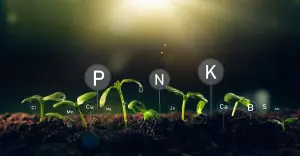
Crop rotation is an agronomic practice whose aim is to alternate different plant species on the same field, within a given time. Crops are planted in the same order, year after year, in cycles of 2, 3, 4, or more years. These are known as two-year rotations, three-year rotations, four-year rotations, etc. Rotations can differ in duration depending on the agricultural system. Crop rotation differs from monoculture farming where one crop-type is planted on the same field for several successive years. The many advantages of crop rotation include improved soil structure (limiting soil erosion), increased soil fertility, and improved resistance to pests and diseases.
Alternating crops to improve the soil
The practice of planting a sequence of different crops (crop family as well as type: spring or winter) is based on agronomic considerations. Increasing yields and preserving the soil, medium and long term, are just two of the aims of crop rotation, which are achieved through preserving and even enhancing soil fertility.
Different plant species uptake and release nutrients in different quantities. Some are more demanding in terms of nitrogen, others phosphorus or potassium. The aim of crop rotation is to enrich the soil and optimise fertility to ensure that it contains the necessary nutrient content. Maize and wheat, for example, which require a lot of nitrogen fertilizer, are preceded by crops that enrich the soil, such as grasses, legumes, and protein crops. Rapeseed, which requires a lot of P and K, can be grown after cereals that require little.

Crop rotation is also important for regenerating the structure of soil structure, particularly when intermediate crops are part of the rotation. Once destroyed, organic matter is transformed into humus. Alternating crops with different root structures also helps to structure the soil and create passageways for water, mineral elements and fauna. Protein crops, oilseeds and legume crops with taproots can alternate with grasses with fascicular root systems.
Supplementary definitions:
- Crop-rotation plan refers to all crop rotations on an entire farm or region.
- The terms "first crop", "middle crops" and "last crop" refer to crops in the rotation. The first is chosen for its nutritive value, the second is the most profitable and the last is generally the one that cleans the plot".
Crop rotation breaks the cycle of pests and disease
Interrupting the cycle of bio-aggressors specific to a plant family (pests and parasites) is achieved by planting a new crop. Pests and parasites decrease as they no longer have a favourable living environment. In fact, crop rotation reduces the need for inputs to fight against them.
Weeds that develop with certain crop species are also reduced using this practice. Certain “weed-propagating" crops, like maize, can follow "cleaning" crops. Alternating crops reduces the need to use the same active chemical ingredients to destroy weeds. Additional tillage also reduces the use of crop-protection products.
